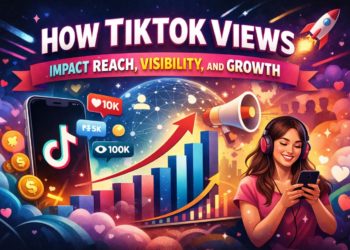Just like Odysseus navigating the seas, you’ll find that podcast advertising allows you to reach engaged audiences with precision and effectiveness. Podcasts attract over 100 million Americans monthly, providing a rich ground for on-demand, niche content that fits seamlessly into daily lives. By tailoring your message to specific demographics and strategically placing ads, you can connect with a loyal, attentive audience. Curious about how this medium can enhance your brand recall and ROI? Let’s explore the nuances and benefits of podcast advertising.
The Rise of Podcasts
In recent years, podcasts have skyrocketed in popularity, with over 100 million Americans tuning in monthly, showcasing a transformative shift in how people consume media. This trend analysis reveals an evolving landscape where traditional media is falling behind, and on-demand, niche content is taking the lead.
You’re not just listening to a podcast; you’re engaging in a medium that fits seamlessly into your daily life—whether during your commute, workout, or downtime.
Listener habits have evolved significantly as well. Data shows that 80% of podcast listeners consume most or all of an episode, a retention rate traditional media can only dream of. This high engagement level indicates that podcasts aren’t just background noise; they’re a primary source of information and entertainment. You’re more likely to trust and act on information delivered through this intimate, personal medium.
Additionally, the variety of available content—from true crime to business advice—caters to every interest, ensuring there’s something for everyone.
With the continuous rise in podcast consumption, the advertising potential is immense. You can leverage this trend to connect with a highly engaged, targeted audience, maximizing your marketing efforts.
Audience Demographics
Understanding podcast audience demographics is crucial for crafting targeted advertising strategies that resonate and convert effectively. By delving into listener profiles, you can identify key characteristics such as age, gender, location, and interests. This data enables you to tailor your messages to specific audience segments, increasing the likelihood of engagement and conversion.
Audience segmentation is the process of dividing your listeners into distinct groups based on shared traits. For instance, if your podcast attracts millennials interested in tech, you can create ads that speak directly to their preferences and challenges. Knowing that 30% of podcast listeners fall within the 25-34 age range, you can craft ads that cater to their unique needs and lifestyles.
Leveraging listener profiles helps you understand not just who your audience is, but also what they value and how they consume content. This insight allows you to strategically place your ads within episodes that align with listener interests, maximizing impact.
Moreover, by continuously analyzing and updating this data, you stay ahead of trends and maintain relevance in your advertising efforts. Effective audience segmentation ensures that your ads don’t just reach people—they reach the right people.
Benefits of Podcast Ads
Podcast ads offer a unique opportunity to engage with a highly attentive and loyal audience, driving better conversion rates and brand recall compared to traditional advertising channels. When listeners tune into their favorite podcasts, they’re usually deeply focused, making your message more likely to resonate. Studies show that 81% of podcast listeners pay attention to ads, significantly higher than other platforms. This heightened engagement translates into increased brand awareness, allowing your message to stick.
Additionally, podcast advertising boasts impressive cost efficiency. Traditional media like TV or radio can be prohibitively expensive, especially for smaller businesses. On the other hand, podcast ads typically offer a more affordable entry point while delivering strong returns on investment. According to research, companies see an average of $2.42 in revenue for every dollar spent on podcast ads.
Moreover, the intimate nature of podcasts fosters a sense of trust and authenticity. Hosts often read the ads themselves, lending credibility and a personal touch that pre-recorded ads just can’t match. This personal endorsement can significantly impact listener behavior, further enhancing your campaign’s effectiveness. By leveraging podcast ads, you’re tapping into a potent mix of brand awareness and cost efficiency that few other channels can offer.
Types of Podcast Ads
You’ll find several types of podcast ads, each designed to maximize engagement and drive results based on your marketing goals. One of the most versatile options is dynamic insertion. With dynamic insertion, ads are programmatically placed into podcast episodes at the time of download, allowing you to target specific audiences with timely messages. This method offers impressive flexibility, enabling you to switch out ads as your campaign evolves. Data shows that dynamically inserted ads can achieve higher relevance and engagement, making them a powerful tool in your advertising arsenal.
On the other hand, baked in ads are embedded directly into the podcast episode during recording. These ads remain part of the episode indefinitely, providing a more organic listening experience. Baked in ads often benefit from the host’s trusted voice and can generate long-term brand recognition as listeners revisit older episodes. Despite their permanence, baked in ads lack the flexibility of dynamic insertion, which can limit their adaptability to changing marketing strategies.
Host-Read Vs. Produced Ads
When choosing between host-read and produced ads, it’s crucial to consider how each format influences listener trust and engagement. Host-read ads offer a personal touch that can significantly enhance the listener’s connection to the message. When a trusted podcast host delivers an ad in their own voice, it comes across as an authentic delivery, making the audience more likely to pay attention and trust the recommendation. According to data from Edison Research, 67% of podcast listeners could recall a host-read ad, compared to only 30% for produced ads.
On the other hand, produced ads bring a polished, professional feel and can leverage sophisticated audio techniques to create a compelling narrative. They allow for consistent branding and can be reused across various platforms. However, they often lack the personal touch that makes host-read ads so effective. Listeners might perceive them as more intrusive, which can diminish engagement.
Ultimately, the choice depends on your goals. If you want to build a deep, trust-based relationship with a highly engaged audience, host-read ads are the way to go. For broader reach and brand consistency, produced ads might be more suitable. Balancing both can also be an effective strategy.
Measuring Ad Effectiveness
Evaluating the effectiveness of podcast ads requires a blend of quantitative metrics and qualitative insights to truly understand their impact. You’ll need to dig into both listener surveys and conversion tracking to get a complete picture.
Listener surveys can provide direct feedback on how your audience perceives the ads—are they engaging, relevant, and memorable? By asking specific questions, you can gauge brand recall, ad sentiment, and even intent to purchase.
Conversion tracking, on the other hand, offers hard data. By using unique promo codes, bespoke landing pages, or specialized tracking URLs, you can directly measure how many listeners take action after hearing your ad. This method helps you calculate your return on investment (ROI) and adjust your strategy in real-time.
Selecting the Right Podcast
Choosing the right podcast means analyzing audience demographics, engagement rates, and content alignment to ensure your ads resonate effectively. Start by identifying podcasts that cater to niche interests relevant to your product or service. A podcast with a highly engaged, specific audience can provide a better return on investment compared to one with a broader, less dedicated listener base.
Next, scrutinize the podcast’s engagement rates. Look at metrics like average listen duration, episode downloads, and listener reviews. High engagement signals an invested audience more likely to pay attention to your ad. For instance, a podcast with a 70% completion rate on episodes can be more valuable than one with a higher download count but lower engagement.
Content alignment is crucial. Ensure the podcast’s theme and style match your brand’s message. If you’re advertising a fitness product, a health and wellness podcast makes more sense than a general entertainment show. The closer the alignment, the more naturally your ad will integrate, increasing listener receptivity.
Creative Ad Strategies
How can you craft podcast ads that captivate listeners and drive conversions? The key lies in leveraging native integration and storytelling techniques.
Native integration involves seamlessly blending your ad into the podcast content. Instead of a jarring transition, the host weaves your message into their narrative, making it feel organic and trustworthy. Data shows that ads presented by the host can increase listener retention by up to 70%.
Storytelling techniques elevate your ad from mere promotion to an engaging narrative. Rather than listing product features, tell a story that resonates with the audience’s emotions and experiences. A compelling story can improve brand recall by 22% compared to standard ads. Use real-life scenarios, testimonials, or hypothetical situations to illustrate how your product or service solves a problem or enhances life.
Moreover, consider the podcast’s tone and style. Align your ad’s voice with that of the podcast to maintain authenticity. Listeners are more likely to respond positively if they feel the ad is a natural extension of the content they already love.
Case Studies and Success Stories
Real-world examples highlight the power of podcast advertising to amplify brand reach and drive impressive conversions. Take the brand partnership between Audible and the popular podcast ‘Stuff You Should Know.’ Audible saw a 25% increase in sign-ups, thanks to host-read ads that resonated with the podcast’s loyal listeners. This success underscores how audience loyalty can translate into tangible results.
Another compelling case is Blue Apron’s collaboration with the ‘Joe Rogan Experience.’ By capitalizing on Joe Rogan’s dedicated audience, Blue Apron experienced a 30% boost in subscriptions. The personal touch of host-read ads created a sense of trust and authenticity, driving higher engagement and conversions.
A third example involves Squarespace’s partnership with ‘How I Built This.’ Squarespace leveraged the inspiring entrepreneurial stories to connect with listeners who were likely to need website services. The result? A 28% increase in trial sign-ups. This demonstrates the effectiveness of aligning your brand with a podcast that shares a similar ethos and appeals to your target demographic.
These case studies prove that when you strategically choose brand partnerships and leverage the loyalty of podcast audiences, you’re not just advertising; you’re building lasting connections that drive measurable success.
Conclusion
You’ve seen how podcast advertising can reach engaged, niche audiences with pinpoint accuracy. It’s no coincidence that as more people tune in, brands are experiencing higher ROI and brand recall.
By leveraging audience demographics and strategically placing ads, you can join the wave of successful campaigns.
So, don’t miss out—start crafting your podcast ad strategy today and watch your brand connect with listeners in a way that feels both natural and impactful.









































































